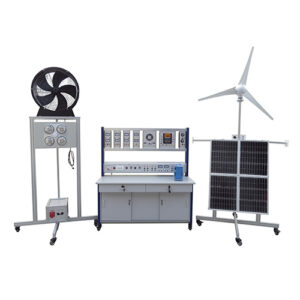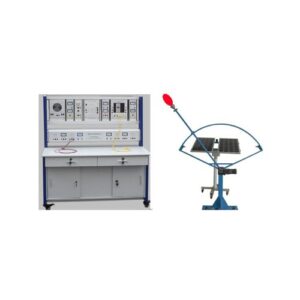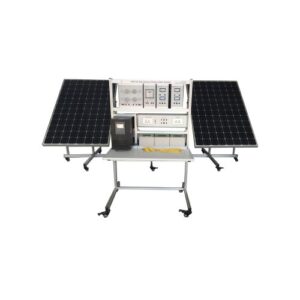ATB20230308R-016 Renewable Energy Smart Grid for Training & Applied Research
Features:
– Laboratory for solar, wind, hydrogen and fuel cell technology
* Set-up of hybrid system with solar, wind, hydrogen and fuel cell technology, as well as batteries
* High reliability and safety
* Comprehensive system software
System consisting of:
– Solar system: min. 1,400 Wp
– Small wind power module: min. 300 Wp
– Fuel cell module: min. 1,200 W
– Battery bank: min. 55 Ah
– Electrolyzer: min. 72 Nl/h optional on request min. 198 Nl/h
– Low-pressure metal hydride canisters: approx. 750 Nl
– Electronic load: max. 2,400 W
– Central energy management unit
– System controller with monitoring and control software
– Measuring technology, such as anemometer, H² flow meter
– On Grid inverter
Accessories:
– Solar Tracking System alternative to the mobile version
– Extra Sensor Kit optional
Training Topics:
– Renewable energy generation & energy management
– Introduction to solar, wind, hydrogen and fuel cell technology
– Design, set-up and operation of hybrid energy systems
– Examination of renewable energy sources and energy storage technologies
– Off -grid operation of consumer loads (120V, 230V, 12V)
– Observation of the following scenarios: night-time operation, periods of no wind, peak loads
Technical Specification: Energy Components:
– Solar panels min. 1440 Wp
– Wind turbine min. 400 Wp
– Fuel cell min. 1.2 kW
– Hydrogen generator min. 60 sl/h
– Hydrogen storage canister min. 1500 sl
– Battery min. 55 Ah @ 48V
– Electronic load max. 2400 W
Measuring Technology and Data Recording:
- Solar
1.1. Solar radiation
1.2. Module temperature
1.3. No-load voltage
1.4. Output power (current, voltage)
1.5. Short circuit current
1.6. Recording of U/I curve
1.7. Recording of time curve (current, voltage, radiation, temperature)
- Wind
2.1. Wind speed
2.2. Output power (current, voltage)
2.3. Recording of time curve (current, voltage, wind speed)
- Fuel Cell
3.1. Hydrogen fl ow rate
3.2. Hydrogen pressure
3.3. No-load voltage
3.4. Output power (current, voltage)
3.5. Recording of U/I curve
3.6. Measurement of time curve (current, voltage, AH2 fl ow rate, AH2 pressure)
- Hydrogen Generator
4.1. Power consumption (current, voltage)
4.2. Hydrogen flow rate
4.3. Hydrogen pressure
- Battery
5.1. Input power
5.2. Output power
5.3. Recording of time curve (current, voltage, temperature)
- Software
6.1. Monitoring
6.2. Data logging
6.3. Visualization of current in real time
6.4. Visualization of hydrogen fl ow rate in real time
6.5. Visualization of voltage in real time
- System Safety
7.1. Hydrogen sensor
7.2. Power circuit breaker
7.3. Temperature monitoring
7.4. Smoke detector
7.5. Monitoring of hydrogen pressure
- Hydrogen storage canister
8.1. Hydrogen pressure
8.2. Hydrogen temperature
8.3. Hydrogen fl ow rate
- External loads
9.1. Power consumption
9.2. Voltage
9.3 Current
Supply including:
– 1 unit Personal Computer (PC)
- Processor : min. AI5
- RAM : min. 8GB
- SSD : min. 240GB
- DVD RW
- VGA : min. Nvidia 2GB
- Display : 19″
- OS : Windows 10
- including keyboard and mouse
– Standard accessories











